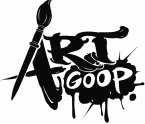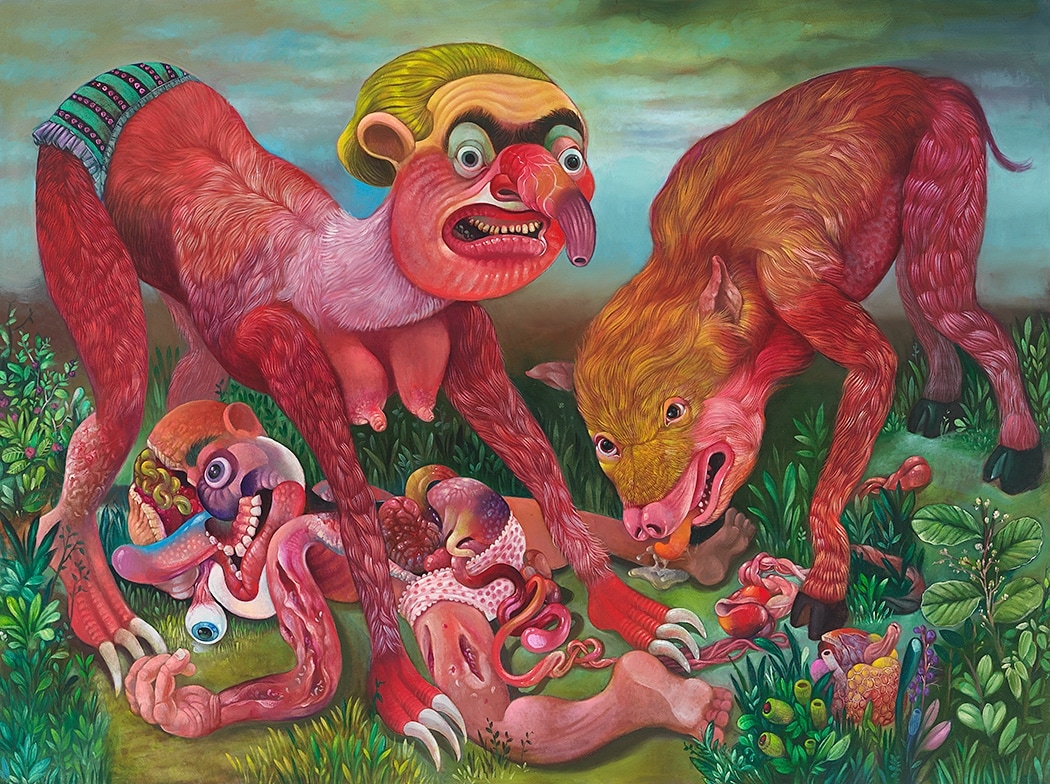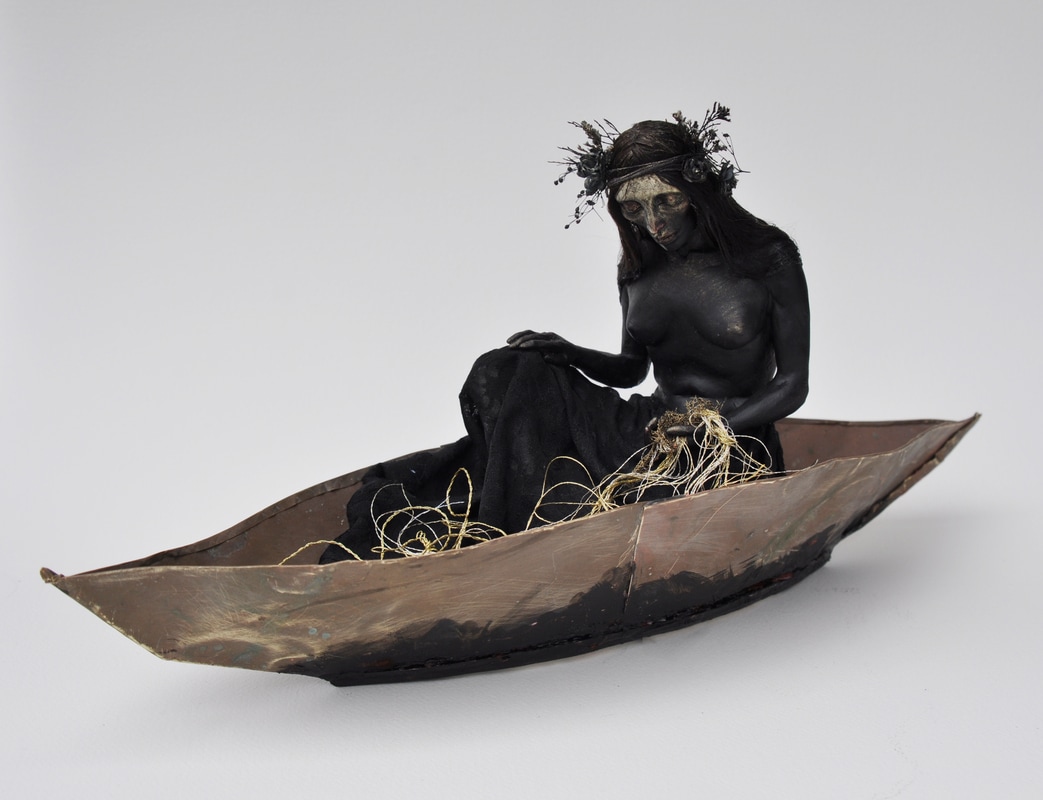|
1. Who were your teachers or influences?
When I was young it was mostly record covers. Some of my favorites that really captured my imagination were: Atom Heart Mother by Pink Floyd, Iron Maiden's self-titled album, Van Halen 1984, and Beastie Boys Licensed to Ill. I remember watching Xanadu and wanting to be the character that painted the giant album billboards. MAD magazine was also a big influence. Later in high school, as I learned about art, I was influenced by Egon Schiele, Picasso, and Max Beckman. All three of them still stay with me, but it's Picasso that still strongly resonates with me. I love that he was always experimenting, warping perception of space, and often used the most grotesque and garish color combinations. Towards the end it seemed he didn't give a fuck anymore, and ended up painting some of my favorite work. There's wild freedom in most everything he has done. Some painters that I'm always looking at: Otto Dix, Ed Paschke, Phillip Guston, Lucien Freud, Balthus, Cezanne, Alice Neel, Jim Nutt, and Hans Belmer. I also look to a lot of Medieval, Renaissance, and Rococo painting. 2. What techniques or tricks did you find most useful when learning to paint? Learning to work with limitations. Before moving to oil, I painted in acrylic for years; the medium has a lot of limitations, but I managed to make them work for me. It's small things like flow of paint, drying time, the sheen of the surface. They're all just very odd with acrylic, and it took a lot of trial and error to develop a way to make them look good. With that being said, I'm not a technical painter. I don't have a set plan. Sometimes when I feel I have things figured out, I usually don't. This is another limitation with which to work and exploit. The only "trick" I can offer to people is to constantly experiment, and to get intimate with your medium. 3. What are 3 key principles of making good art, in your opinion? Experimentation: What draws me most to art is being able to see that the artist was challenged. This isn't necessarily just with the craft of image-making, but also with the conceptual side. Love of form: there are some painters that are fairly common in their approach and image-making, but they will hit on one little element that makes me swoon- anything from how they render fabric, flesh, hair- to how they pay attention to subtle curves of a calf. I think you can always tell artists' obsessions and kinks through their work. I think it's important to identify and cultivate your obsessions. Love of the medium: be it painting, video, performance, printmaking- I want art that interacts with the medium, and it not just be a way to transfer images over to another stage. 4. What are the most common mistakes that you see other artists make? I assume this question is directed towards young artists that are trying to find their way. I always tell them to not be afraid of making mistakes. If you fuck up, try again or use the failure to your advantage. A lot of my paintings came about through failures. Don't get too precious with your ideas. Editing and throwing stuff out is essential, as well as just letting stuff flow without caring what "it means." Meaning, or whatever, is going to slowly emerge as your work develops. Don't try to shoehorn a narrative, or some ham-handed symbolism. 5. Can you break your painting process down into 10 steps, or less, for us? In the past I would pretty much just jump right into a painting and let the paint dictate what sort of image would emerge. For my current crop of work I have been working from a detailed underpainting. It's new for me! I essentially work from dark to light, tone down with glazing, and then bring it back up, slowly adding saturation through more glazing. I'm always trying to push it further- from colors, detail, atmosphere. I have been taking regular photos of my progress, because sometimes it seems maybe I took a wrong turn. When I go back and look at earlier incarnations, I realize the current state of the painting is in a good place, and that I made some good decisions. Painting is improvisational for me, which is not to say I'm winging it or just working from an intuitive place. Every painting presents a new challenge- I'm constantly making new decisions, and interacting with the work. A final piece looks much different than the original conception. For me to go forth with a step by step process, I think I might kill myself. Painting would feel like an office job. 6. What colors are currently on your palette? titanium white transparent white cadmium red bright red W&N Winsor red deep W&N Winsor yellow transparent yellow yellow ochre burnt umber ultramarine blue cobalt blue cobalt light turquoise cobalt light violet permanent green permanent green light sap green oxide of chromium perylene black 7. Do you have a paint color or medium or other art-related implement that is indispensable? If so, what is so useful about it? Cobalt light turquoise, Liquin fine detail medium, good brushes
2 Comments
1. Who were your teachers or influences? I have been very lucky to have a number of amazing teachers as well as friends who continue to help and influence my work, such as Nathan Ota, Bob Dob, David Simon, Glen Eisner, Brian Booth-Craig and many others. I was incredibly fortunate to go to school with a number of super talented people, which was very inspiring. Also my mom, Marcia Dalva, is a sculptor and has always been a big influence in my work, both with technical processes and helping me flesh out ideas. I usually fall back on listing major influences like Degas, Mucha, Schiele, Klimt, Bernini, etc, but I find that I'm often inspired by a wide variety of subjects. Fashion design is very influential, whether it's an antique piece of flowy silky simplicity by Madeleine Vionnet or the dramatic mantles of Paul Poiret, or the more modern work of houses like Balmain, Valentino, McQueen, and there's this one couture collection, Fall 2009 I think, by Galliano that has been in regular use as makeup inspiration for my figures. This list is getting long, but also I can't forget more contemporary artists like Elizabeth McGrath (who's work was one of the reasons I started sculpting in the first place), Virginie Ropars, Andrew Hem, Allison Sommers, and countless others who I'm constantly blown away by. Also just old things, animals moving certain ways, movies, quiet woods and peeling paint. Those are important too. 2. What techniques or tricks did you find most useful when learning to paint? Well, I'll plug my little tutorial here! http://www.instructables.com/id/Finishing-and-Detailing-a-Sculpey-Polymer-Clay-Scu/ I think gestural drawing is incredibly important, and just studying and practicing creating the anatomy of your subject. I try to do as much drawing from life as possible, I took my first life painting class in high school and will forever know I'm just scratching the surface of the subject. Drawing lightly at first. Not being too precious with your work. Knowing when to stop. Knowing when to just throw something out and start over rather than endlessly fiddling with it. Also the vital and basic practice of working out your work as a small, rough thumbnail image first before diving in. This helps avoid major issues later on, and sometimes brings you to a different and better conclusion than your original intention. And, as my mother always says, "Tools are your friends." So, finding the right tool for what you need to accomplish. 3. What are 3 key principles of making good art, in your opinion?
4. What are the most common mistakes that you see other artists make? Sometimes people don't seem to do their homework. This is something I did when I first started out, I used what I thought was a super unique reference image (from the internet, first mistake!) and then later found out it was a photo of a famous actress from silent films, which is still embarrassing years later. Now, if I'm using a photo for direct reference I make sure either I took it myself, or, if im in need of something I can't reasonably photograph myself (I don't have a lot of access to snarling tigers but sometimes you just need that photo) I make sure to alter it or mix together a few images so it's not just regurgitating someone else's work. I think this is a common issue for many artists, since it's so easy to access images. *this is not to discredit the huge benefits one can get from doing master copies, though. Also I think a lot of people want shortcuts, and give up on their work when it's not immediately as amazing as they think it should be. I think the practice and obsession required to be good at any kind of art is usually simplified. You have to power through making a lot of bad drawings, ugly paintings and stupid sculptures. It's constantly walking that fine line of knowing that you're pretty good at something so you should keep doing it, but knowing also that you're kind of terrible and need to work a lot harder, all the time. 5. Can you break your painting process down into 10 steps, or less, for us? (This is a general idea of the process for a sculpted figure in a shadow box, but sometimes I'll use a glass dome or have a figure freestanding)
6. What colors are currently on your palette? Usually I put out these colors but don't necessarily use them on every piece, they're all Liquitex brand heavy body acrylic: Unbleached titanium Titanium white Parchment Ivory black Raw umber Burnt sienna Alizarin crimson Turner's yellow Prussian blue Perylene maroon (this one is new- Windsor & Newton) Red oxide Yellow oxide Cad red medium 7. Do you have a paint color or medium or other art-related implement that is indispensable? If so, what is so useful about it? Xacto knife. Super useful while sculpting, to scrape things, carve cured Sculpey, scratch details into clay, and, you know, sharpen pencils. About the Artist: Jessica Dalva dabbles in painting, sculpting, sewing tiny and regular sized costumes, set design, puppetry, and welcomes new tasks daily. A northern California transplant, Dalva lives and works in Los Angeles, and hopes someday to know how to make everything and/or anything.
|
Art GoopArt Goop is a Q&A for artists by artists. We ask questions designed to examine the techniques and methods of some of the most inspiring artists working today. Categories
All
Archives
September 2017
|



 RSS Feed
RSS Feed